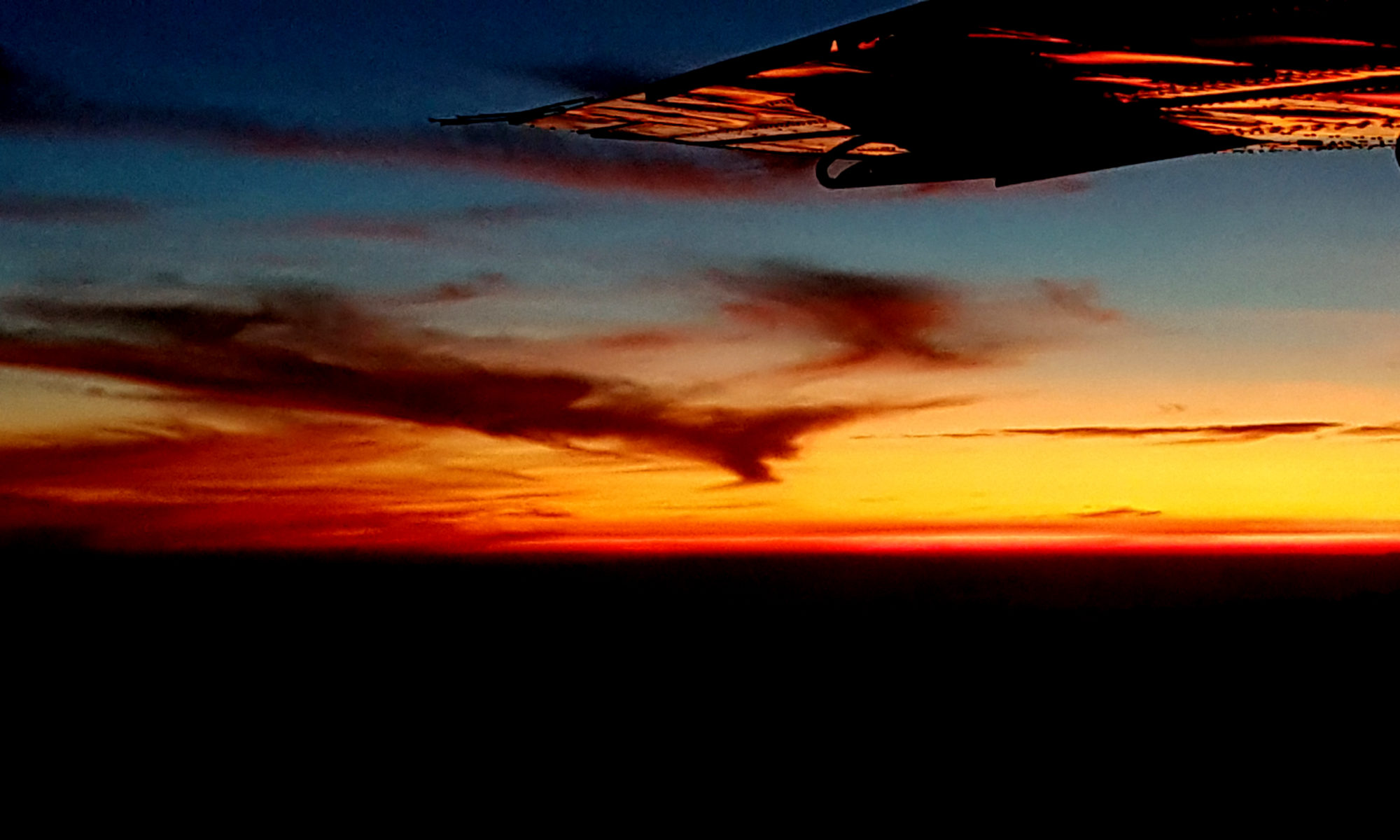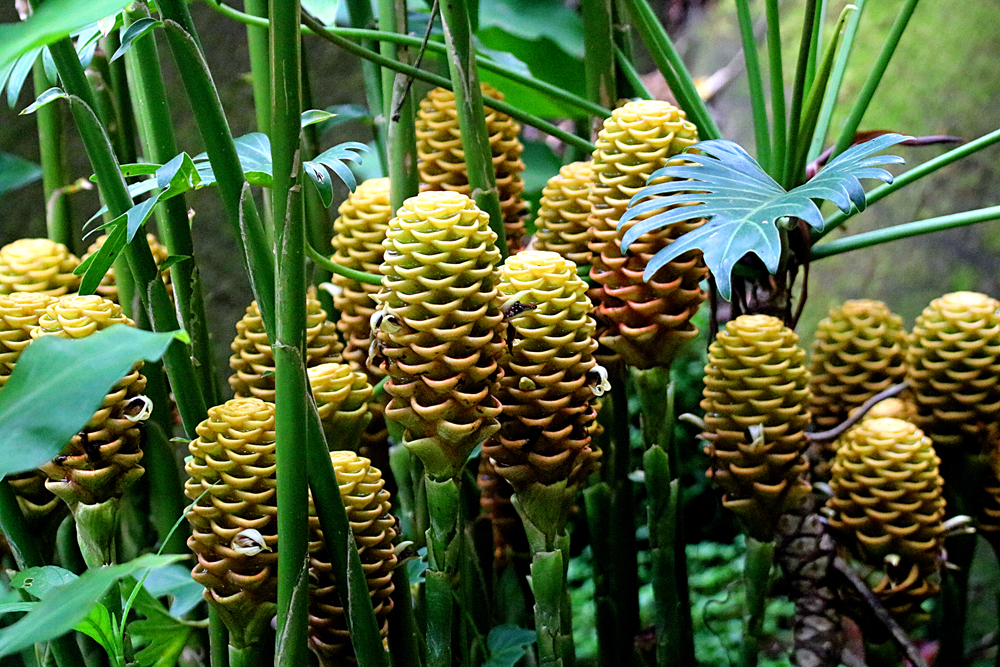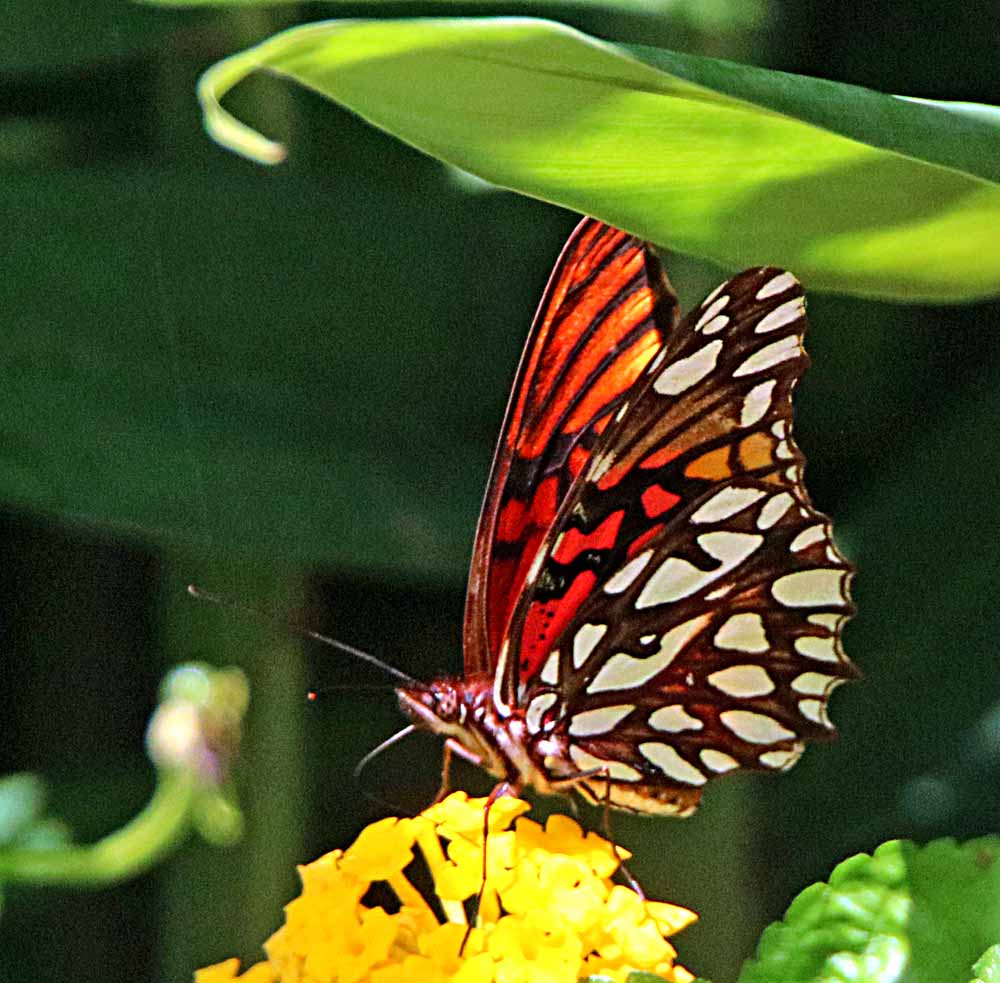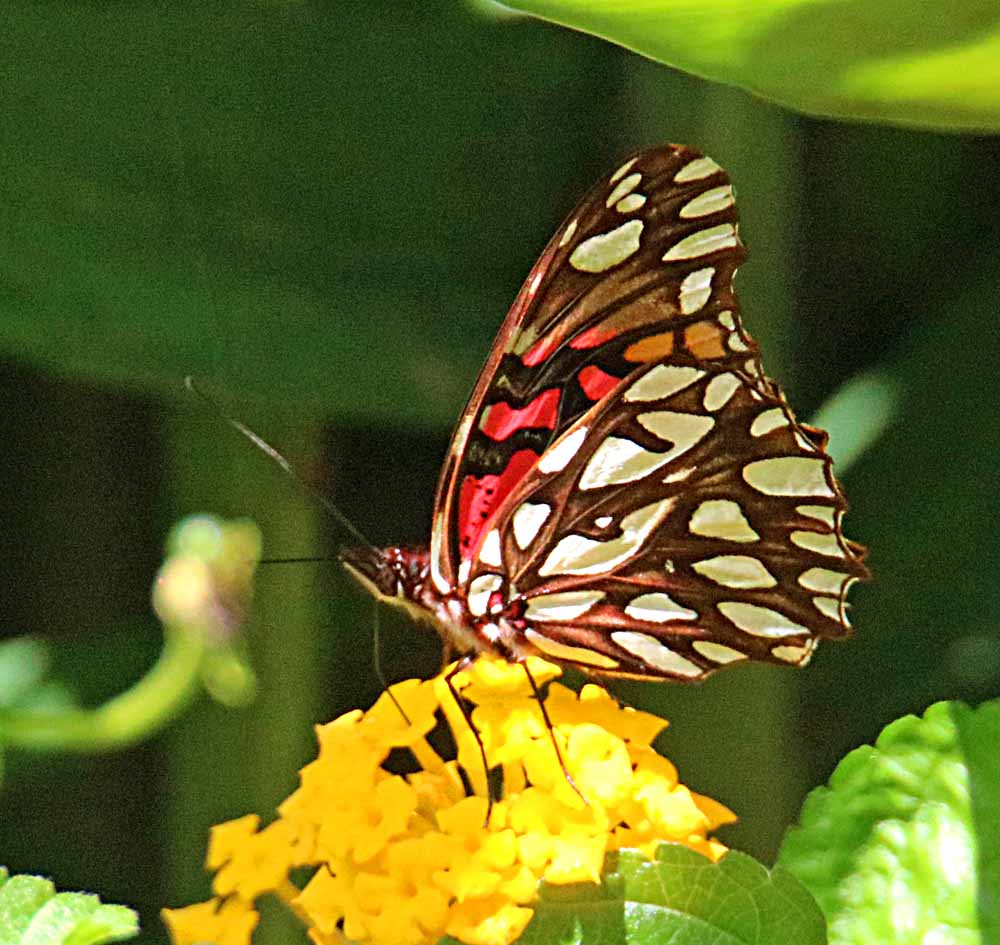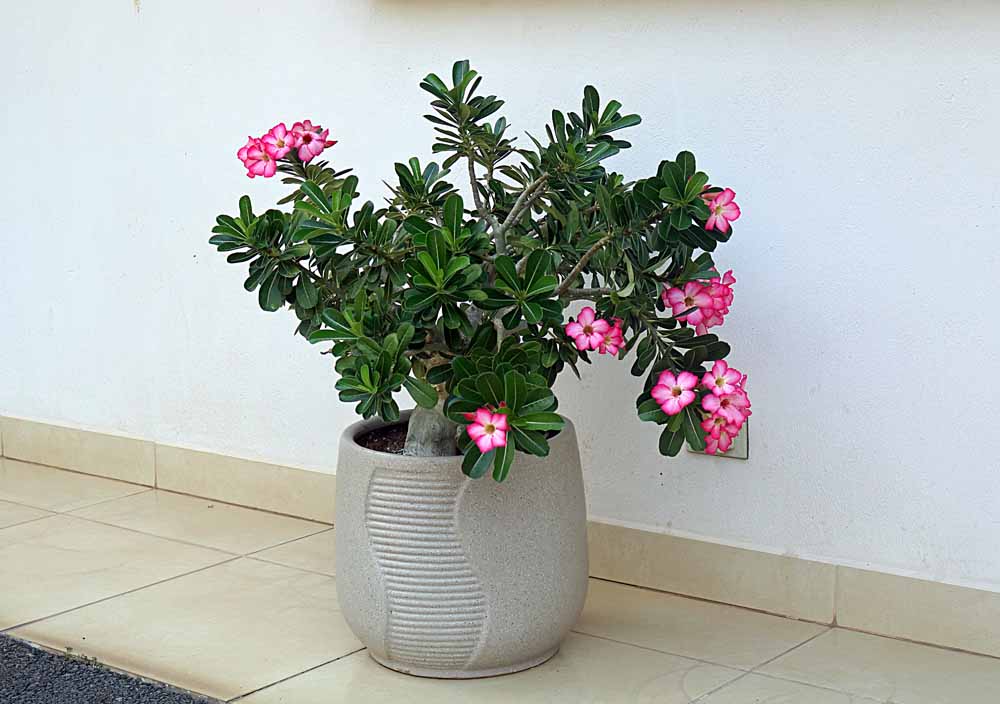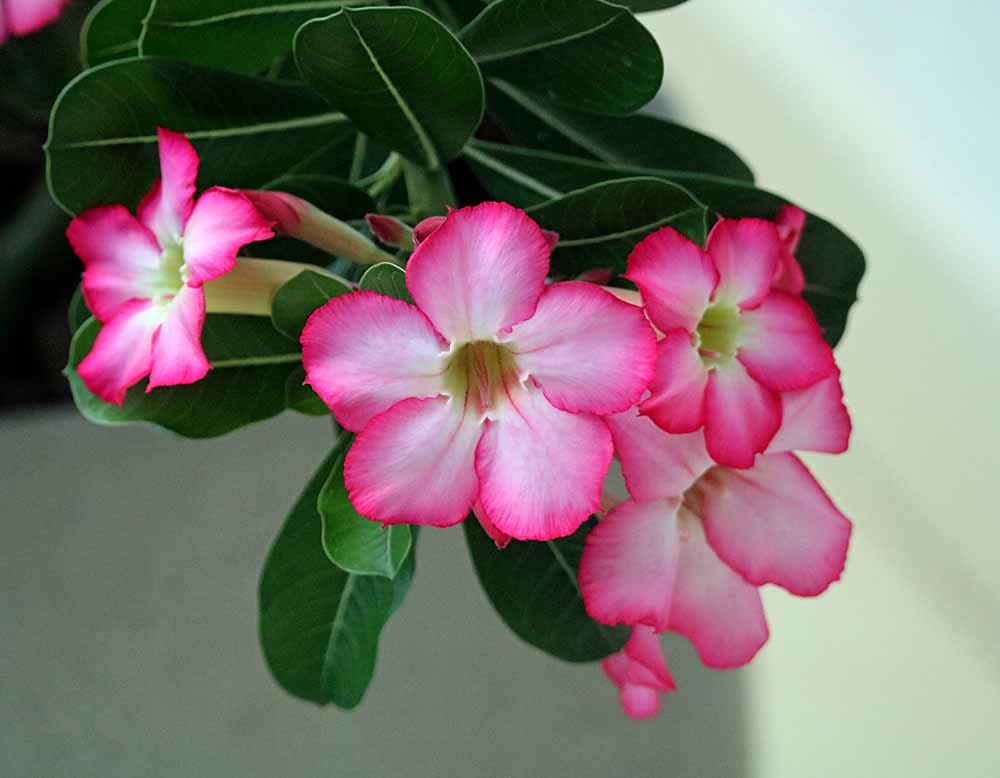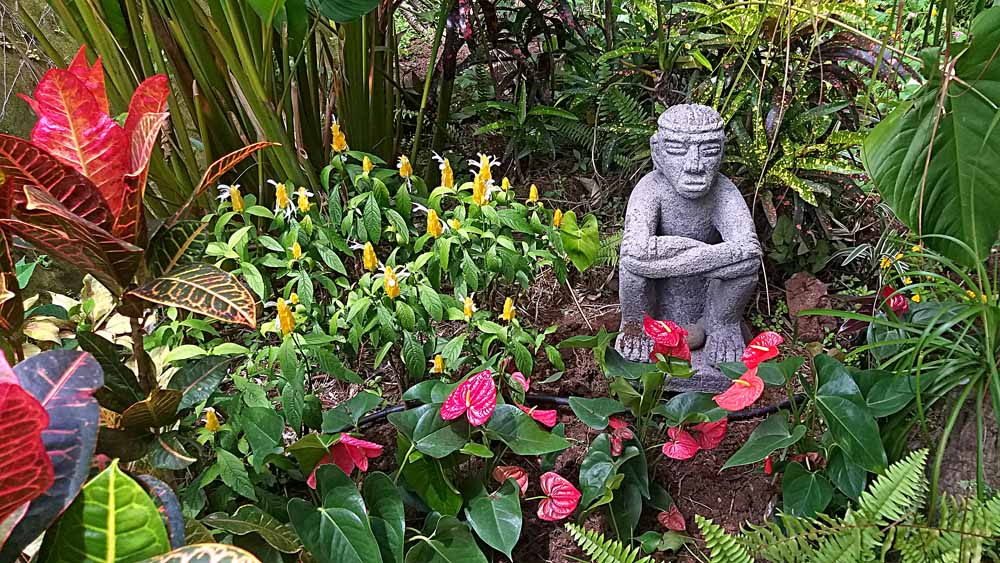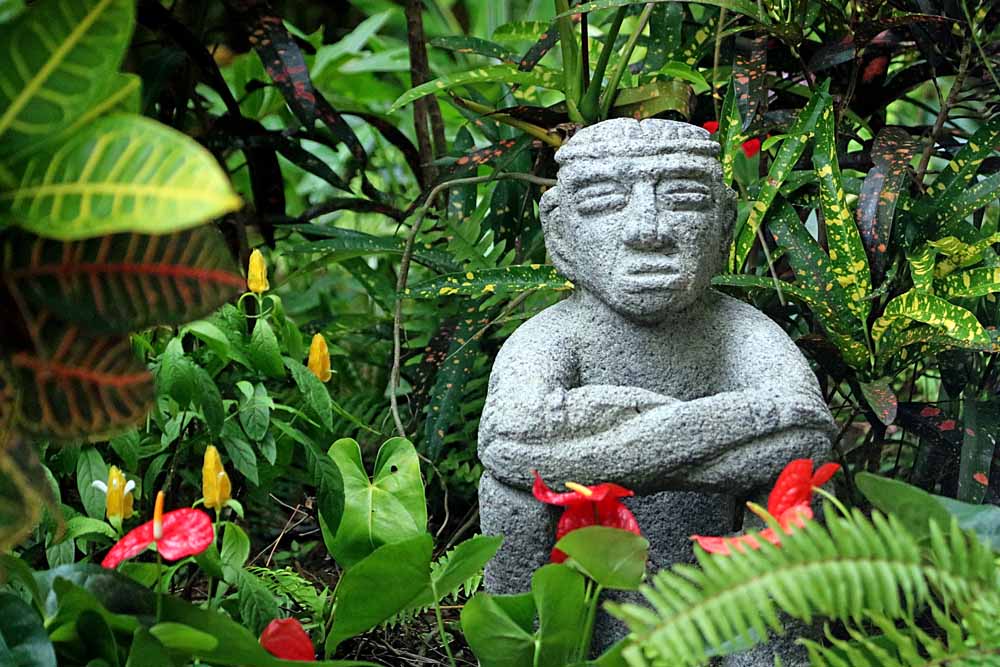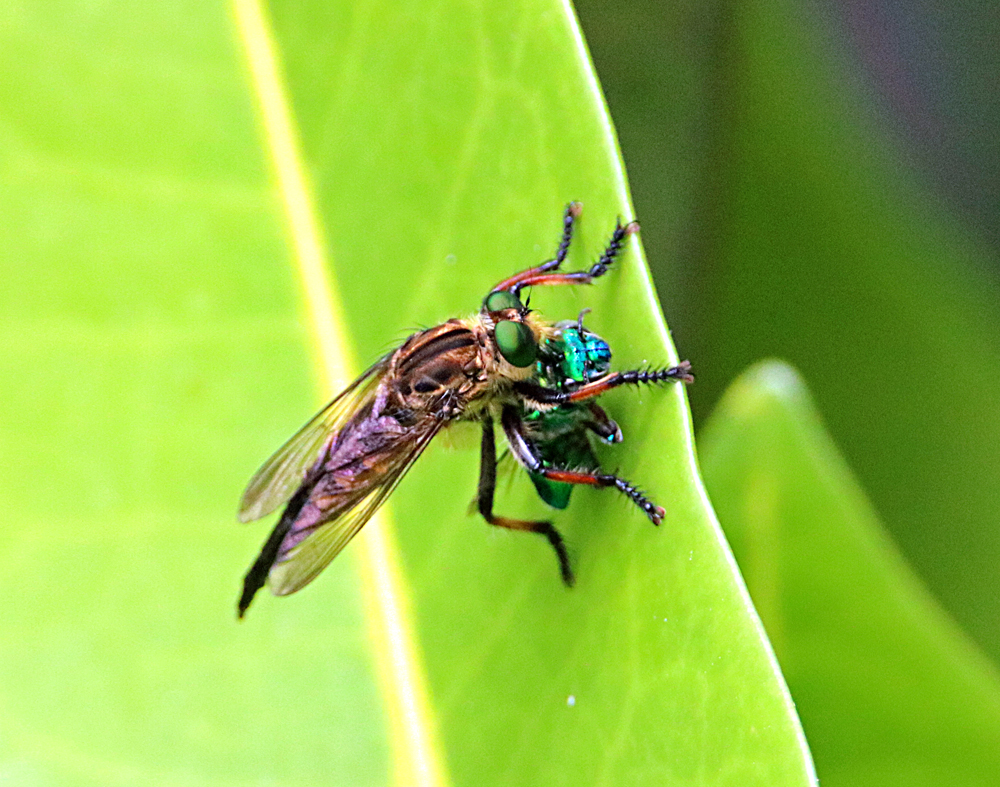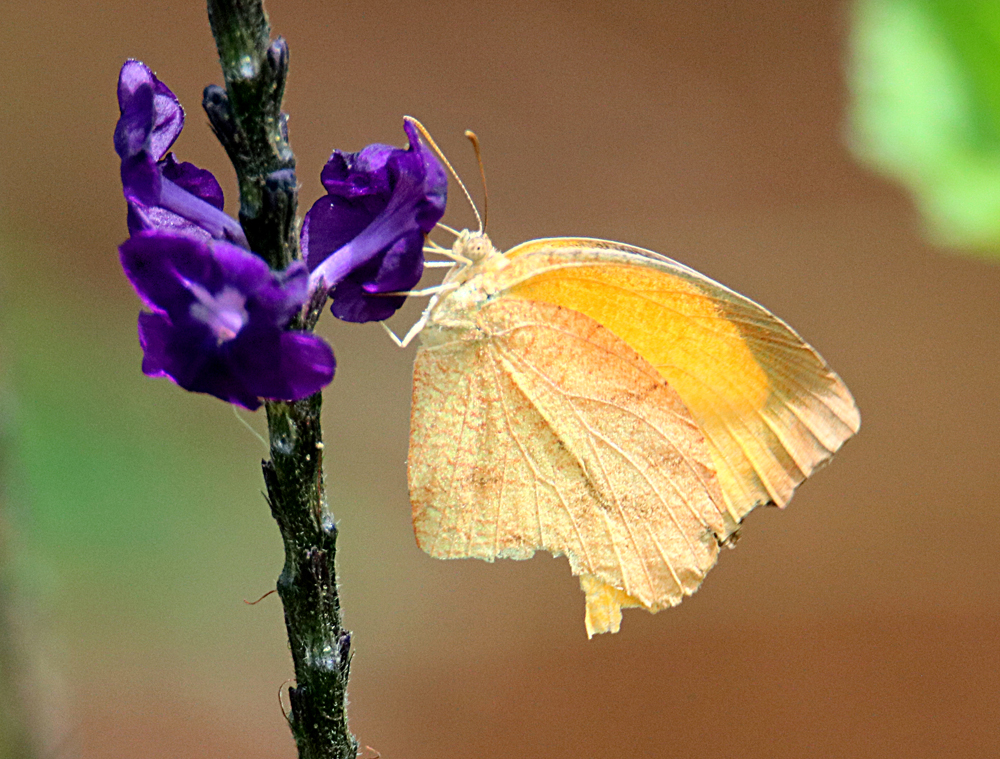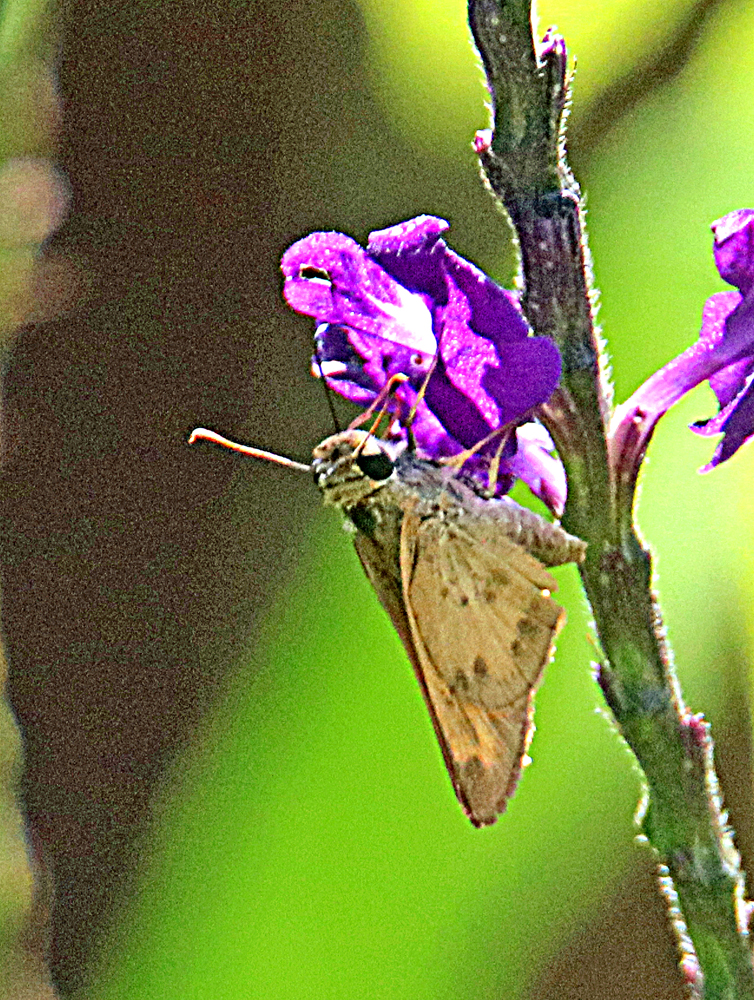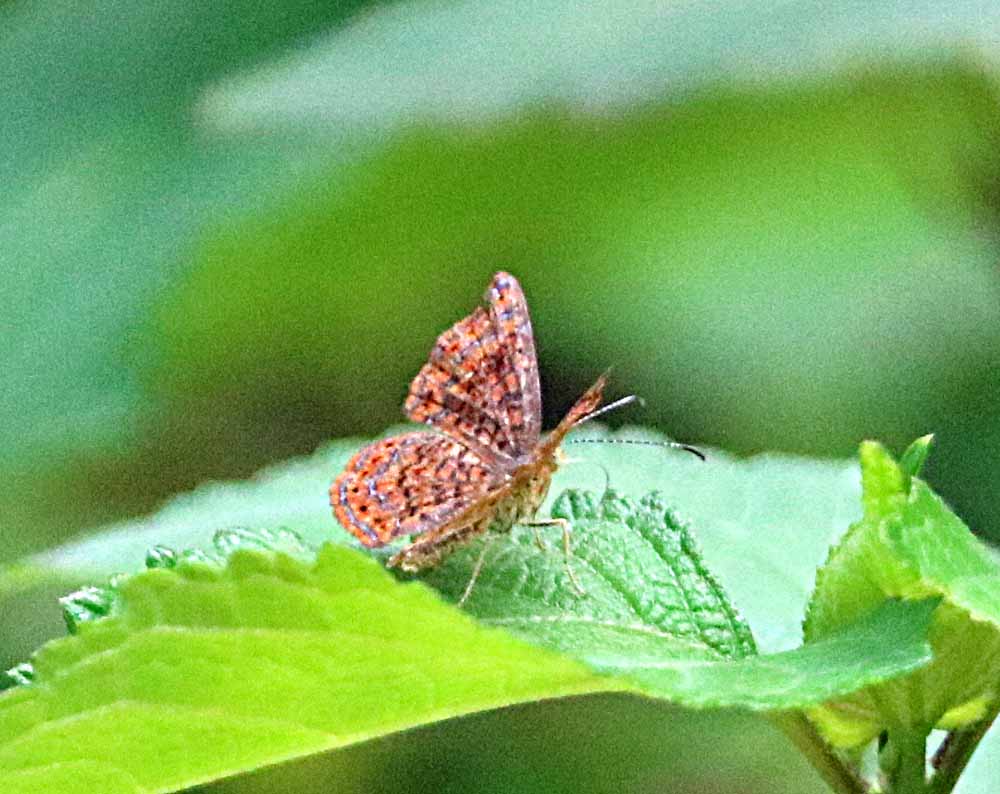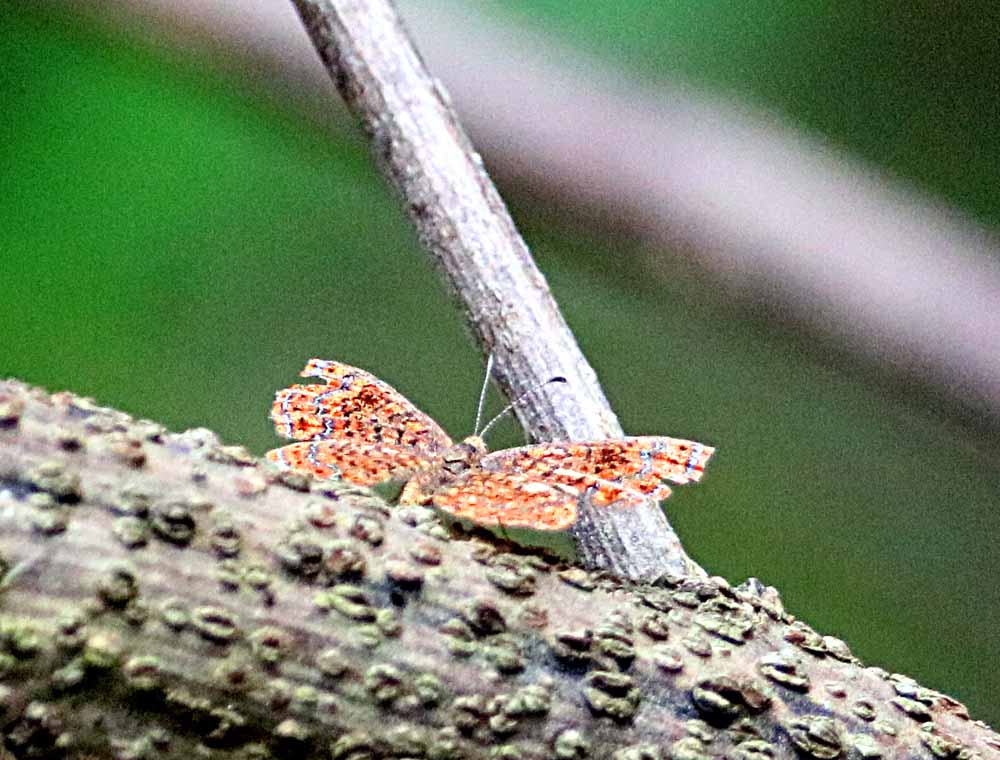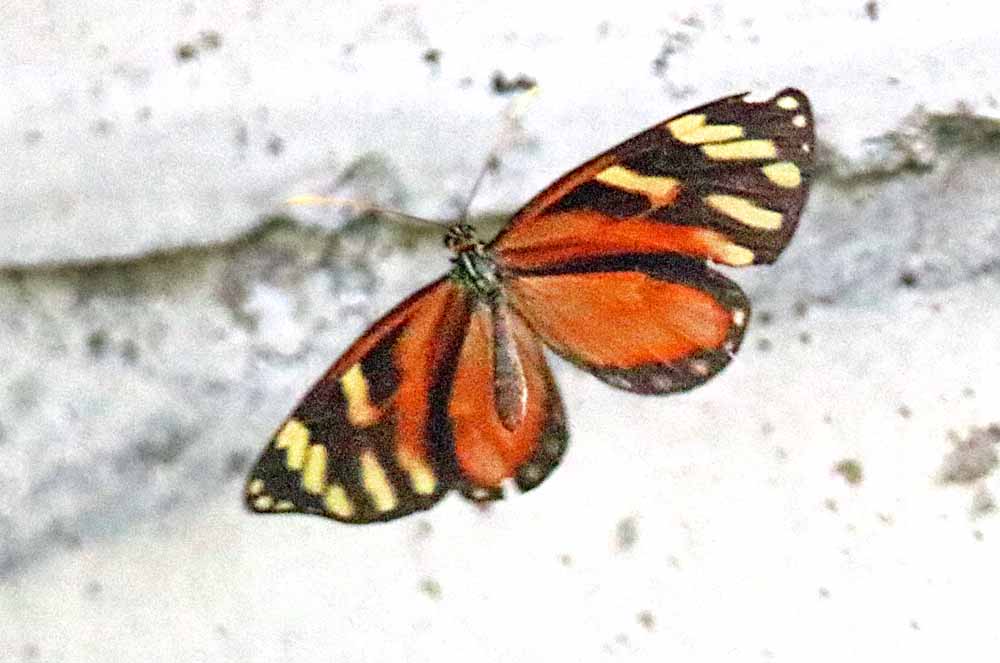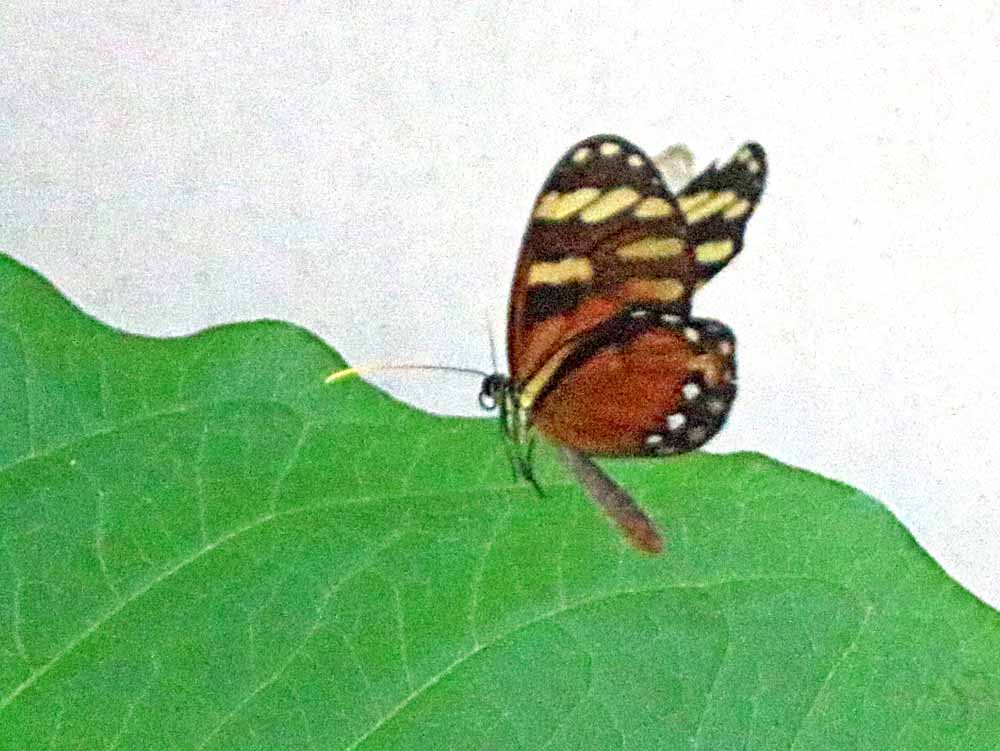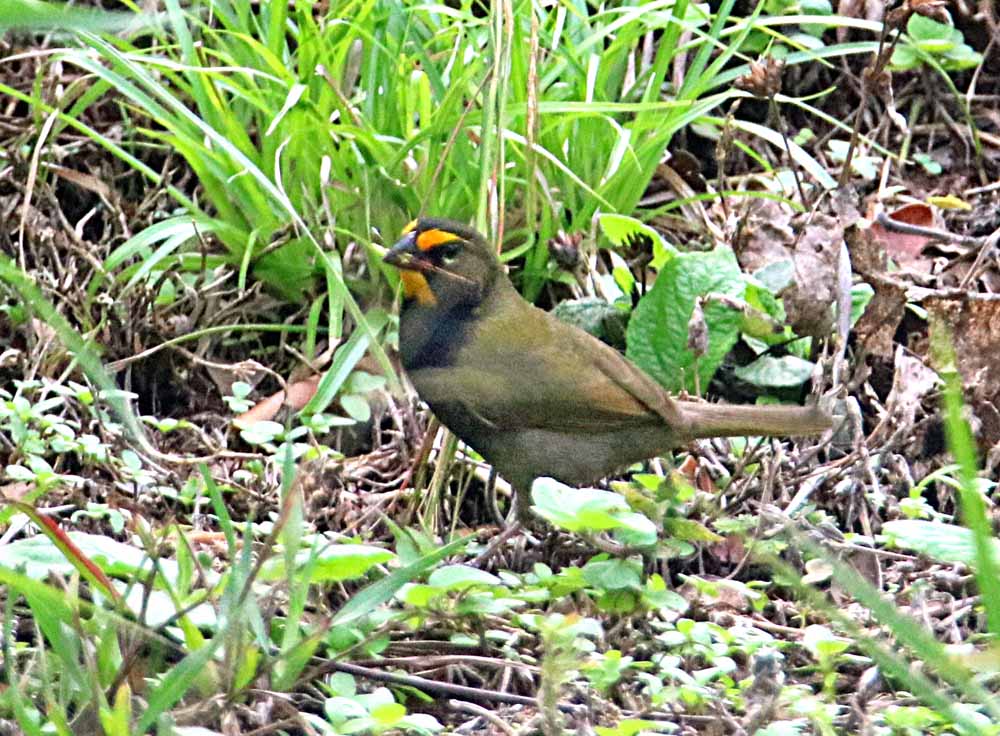. . . for me at least, and for BAMONA, as I had to ask for the additional species, though there are lots (160) of observations on iNaturalist CR. This was of course in my garden, on the “Once de abril” or Golden Dewdrop flowering shrub (Duranta erecta). The butterfly is the Anius Metalmark (Charis anius), one of the tiny (thumbnail sized) Metalmarks. In addition to the iNat observations above you can find a little bit of info on iNaturalista Costa Rica. It is found from Honduras south to Brazil. No other information seems to be online nor in my books. I got only two shots before he disappeared.
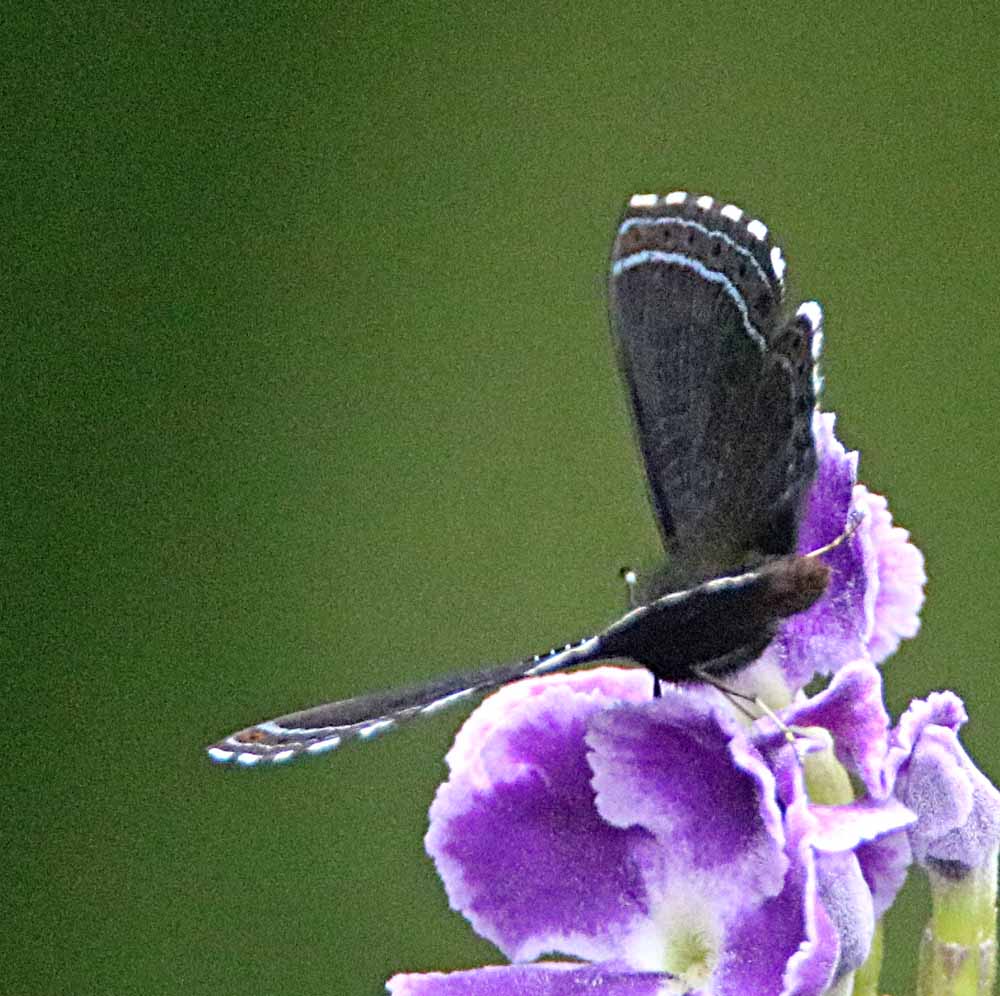
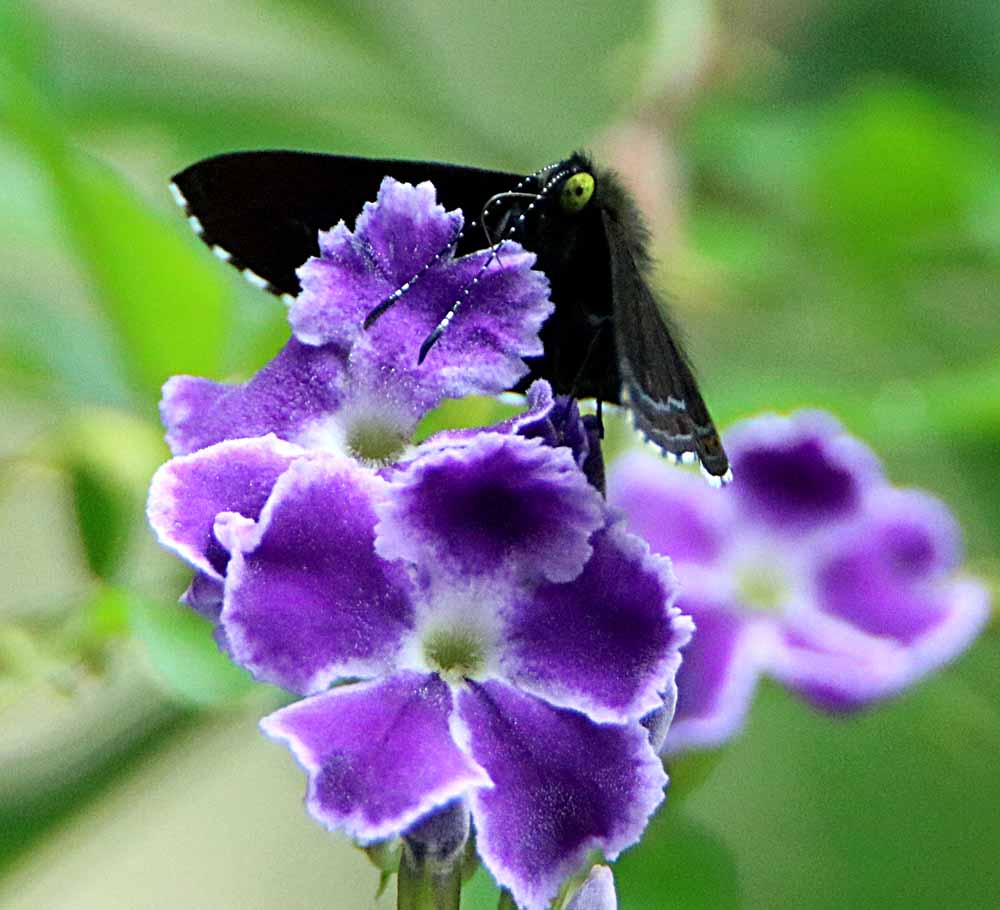
¡Pura Vida!

